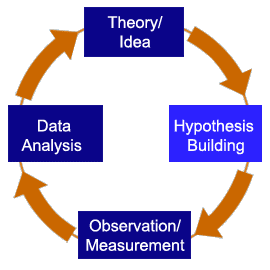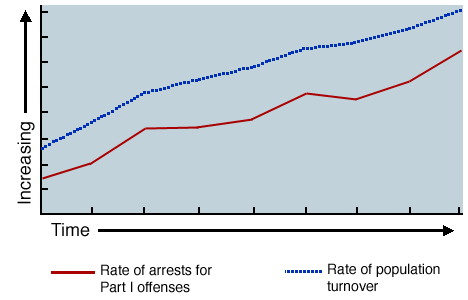Main Content
Lesson 2: Theory and Criminal Justice Research
Hypothesis Building

In order to test a theory, one must first put forth a specific hypothesis that can be tested in a scientific manner. This second component of the Scientific Model is Hypothesis Building and sets forth which aspects of social reality are to be evaluated.
Shaw and McKay's theory contained two major concepts: disorganization and serious criminality. One of the first things to recognize about hypotheses is that they come about on two distinct levels: abstract and concrete. A conceptual hypothesis is abstract; that is the terminology used to describe social reality are abstract labels that encompass many different facets. For example, if I asked you to walk through a "bad" neighborhood and point out "disorganization," you might identify abandoned buildings, certain businesses (like pawnshops), litter in the streets, etc. All of those things are concrete representations of the concept 'disorganization.' In other words, they are concrete indicators of abstract concepts. Later in the course we will be looking at conceptualization and operationalization in great depth, but for now, in our discussion of the traditional model of science, you should simply understand the difference between the two. So for Shaw and McKay's theory of Social Disorganization, the hypothesis could be as follows:
- Conceptual Hypothesis (Abstract): As a neighborhood becomes more disorganized, the potential for serious criminal activity markedly increases.
- Testable Hypothesis (Concrete): As rates of population turnover increase, the number of arrests for Part I index offenses will increase proportionally. See this hypothesized correlation between rates of population turnover and the number of arrests in Figure 2.1.

Figure 2.1: Testable Hypothesis Example
Notice that I called the latter hypothesis testable. This means that the hypothesis has put forth indicators of the concepts that are measurable, and thus testable scientifically. We are now at the stage of the scientific process where empirical observations can be made: we can get data on how frequently residents move in and out of a neighborhood, we can readily get arrest statistics from the police department for the various zones/neighborhoods, etc.
